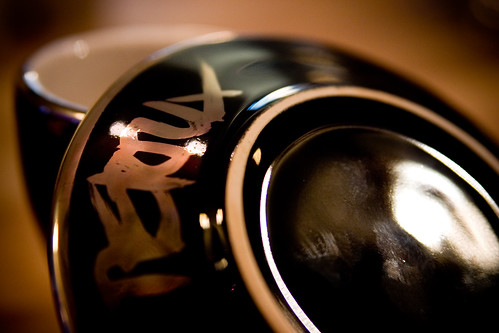


   |
Sharon's Muse.... Let's chat over coffee while I ponder some things |
About Me
My Meez 
Recent Entries
Archives
Personal
Interesting Sites
RAINE'S BLUES
GOLD MOUNTAIN
AGAIN
Need Flashplayer to view. Give time to load.
TOOL & BAD BOYS Short, Short Ebooks |
Tuesday, November 18, 2008  Zora Neale Hurston Below is a repost of an article I wrote on Zora Neale Hurston for BellaOnline during my tenure as the Short Stories Editor. Zora Neale Hurston knew the South, knew its people and the syntax of their voices. As an anthropologist, folklorist, and novelist, she traveled the back roads of the southern states, collecting narratives from women, men and children, stories she related to the rest of the world, giving voice to the silent many. Her affinity for her Southern roots showed in her fiction and began with her birth in Notasulga, Alabama in 1891, although she would later claim she was born in Eatonville, Florida in 1901. She did, however, grow up in all-black Eatonville with her minister/carpenter father who would later be elected mayor. Hurston's mother died when Hurston was nine, but she always remembered what her mother told her: "jump at de sun," a directive for Hurston to aim high in her life. After her father remarried, a rocky relationship with her stepmother forced Hurston to leave home and live with relatives. From there, she was sent off to school, and afterward left to join the Gilbert and Sullivan revue as a wardrobe girl. Thirsting for more education, she eventually settled in Baltimore where she attended Morgan Academy (the high school division of what is now Morgan State University). After graduating, Hurston moved to Washington D.C. to attend Howard University. She managed to work as a manicurist, a waitress and a maid while also attending classes. It was while at Howard that Hurston published her first short story, "John Redding Goes to Sea," in the school's literary magazine in 1921. Another story, entered in a contest run by New York magazine Opportunity in 1925 won second place and gained Hurston attention. The magazine's editor, Charles Johnson as well as Alain Locke, a teacher, editor, and writer in his own right, both encouraged Hurston to move to New York. During the Twenties, New York was undergoing a renaissance of black cultural art familiarly referred to as the Harlem Renaissance. It didn't take long before Hurston was known among the movement's luminaries, which included Richard Wright, Countee Cullen and Langston Hughes. During this time, Hurston began an association of black artists and continued writing short stories. She attracted the attention of wealthy patrons, who were more than willing to finance her work. Additionally, she became an assistant to writer Fanny Hurst. Later Hurston received scholarships to Barnard College (the women's division of Columbia University) which she attended in the fall of 1925. There she had the opportunity to study with the renowned anthropologist Franz Boas. During her studies at Barnard, Hurston realized a desire to study African-American folklore, a desire formed from her early years in Eatonville. In 1927, backed by a fellowship from Columbia, Hurston set off to Florida with the goal of collecting songs, customs, and superstitions of African-American folklore. During her subsequent years of traveling, Hurston would also go to New Orleans to interview voodoo doctors, something that previously had not been done by an academic. Hurston's years of gathering folklore as well as her childhood in Eatonville would inspire her writing. Her first published book, Jonah's Gourd, was published in 1934 and was set in a fictional town similar to Eatonville with protagonists fashioned after her own parents. Her second book, Mules and Men, published in 1935, would recapture the tales she collected in her travels throughout the South. While in Haiti, Hurston wrote her famous opus, Their Eyes Were Watching God, in which Janie Mae Crawford suffers through one failed love affair after another. The dialect of the book's characters spoke in the vernacular of the South, a parlance that made it difficult reading for some, but which captured the true flavor of the place, time and characters. In later years, Hurston would fall on hard times as her financial backing from academia and her patrons dried up. This was especially hard for Hurston as it was now the Great Depression, and the writer found herself again working as a maid in order to sustain body and soul. She worked at various jobs throughout the subsequent years, including as a librarian and a substitute teacher. Hurston's health failed as she grew older, and she suffered a stroke in 1959, which left her substantially impaired. Tragically, in 1960 she died alone in a welfare home, without friends or family. She was buried in an unmarked grave at an all-black cemetery through the charitable donations of local friends and acquaintances. At the time of her death, the world had virtually forgotten Hurston and her literary contributions. Hurston would still be forgotten if not for an article written by Alice Walker in 1973. In her article, Walker related how Hurston’s works had inspired her own writing, and had also inspired her to visit Eatonville, and to finally visit Hurston's unmarked grave, for which Walker bought a headstone with the following: "Zora Neale Hurston/ 'A Genius of the South'/ 1901---1960/ Novelist, Folklorist/ Anthropologist. Thanks to Walker, Hurston is no longer the unheard voice of the Renaissance, but has inspired a new renaissance of women writers who tell their stories in the dialect of the silent many. Read Hurston’s tale Sweat. Labels: BellaOnline
|
| Layout Design by Hajira | Thanks to:Getty Images • Blogspot • Blogskins • |